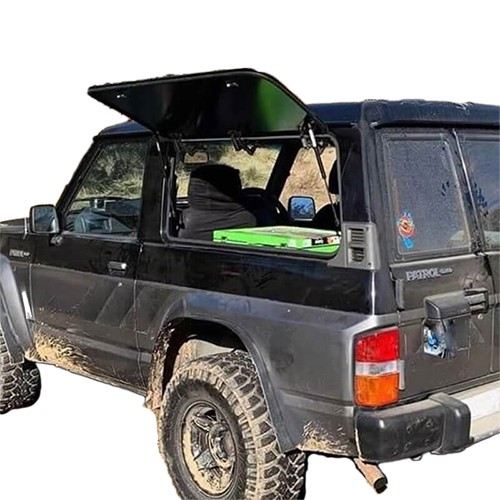Mud Driving Recovery Techniques
If you want to know what "sinking feeling" really means, try driving into a patch of deep mud. Suddenly it feels like your wheels have been dipped in glue, the steering stops working, your vehicle starts to settle and speed falls off. Before you know it you're stopped. And stuck. If you go off road in wet weather you're going to have this experience sooner or later, so you need to be prepared for it. Part of that is having the right gear to get yourself out; you also need to know what to do. Trial and error is not the way to go when you have a couple of tons of vehicle up to its axles in mud. We thought we'd put together a few tips to help you out.
First, carry the right gear in your vehicle. Your standard jack and a cheap tow rope aren't enough; you need proper recovery equipment. At the very least you're going to have to move some mud, so a shovel is essential. Folding military ones don't take up much room and they're short and handy enough to use around wheels. A couple of snatch straps will make life a lot easier if you need to get pulled out, and if you have a winch on your vehicle you'll be able to self-recover even if there's nobody else around. An exhaust jack is a great way to lift a wagon that's sunk in deep, and unlike a normal jack it works well on soft ground. Something to add traction is vital too. At least one pair of recovery tracks are vital, and a roll of old carpet or a couple of cheap door mats will come in handy too.
Anyway, when you find yourself stuck in mud the first priority is not to dig yourself in any deeper. That means don't try to rev yourself out – it won't work. All you'll do is spray mud out from under the wheels until your frame is resting on the ground. Instead try to ease out back the way you came. If that doesn't work try rocking back and forwards, again easing the gas on every time you move. No luck? Time to get digging.
Your priority here is to build up as much traction as possible. If you have recovery tracks you need to get them under your wheels, and if necessary dig out ramps for the wheels to run up. Unless you can see firm ground just in front you're usually better backing out, because at least you know there's a solid surface in that direction. Aim to have your wheels going up a slope that's no steeper than 15 degrees, and get to work with your shovel. Stay out from under the vehicle though – if any part of you is under it and it suddenly sinks deeper you're in trouble. If you have an exhaust jack, or a standard jack sitting on a recovery track, you can lift your vehicle one corner at a time and shovel dirt, stones and anything else you can find under the wheel. Get anything that can provide some grip in the path you want the wheels to take – branches, rocks and your carpet if you have one. Use your tracks right against the wheels themselves to give you a good start. Then once you've given yourself a clear route get into reverse (and low range if you have it), lock the diff, check the steering is straight – angled wheels will create resistance – then gently hit the gas and back out of there. Don't stop until you're on solid ground – if you do you'll just start sinking again.
If you need a tow, try jerking on it to help get unstuck; just leave some slack in the snatch strap so the tow vehicle can get a short run up and apply all the force at once. It's essential to damp the strap if you're doing this though. A blanket or even floor mat will do, but a proper damper is better. That cuts the danger if the snap breaks under the sudden strain. If you have a winch then find a good anchor directly in front of you and secure the cable properly. A snatch block is a great help too.
Getting out of deep mud is hard, dirty work, but if you have the right gear and know how to use it you can manage. If you don't have the gear you could be there a while, though, so before you head off road make sure you're properly prepared.







